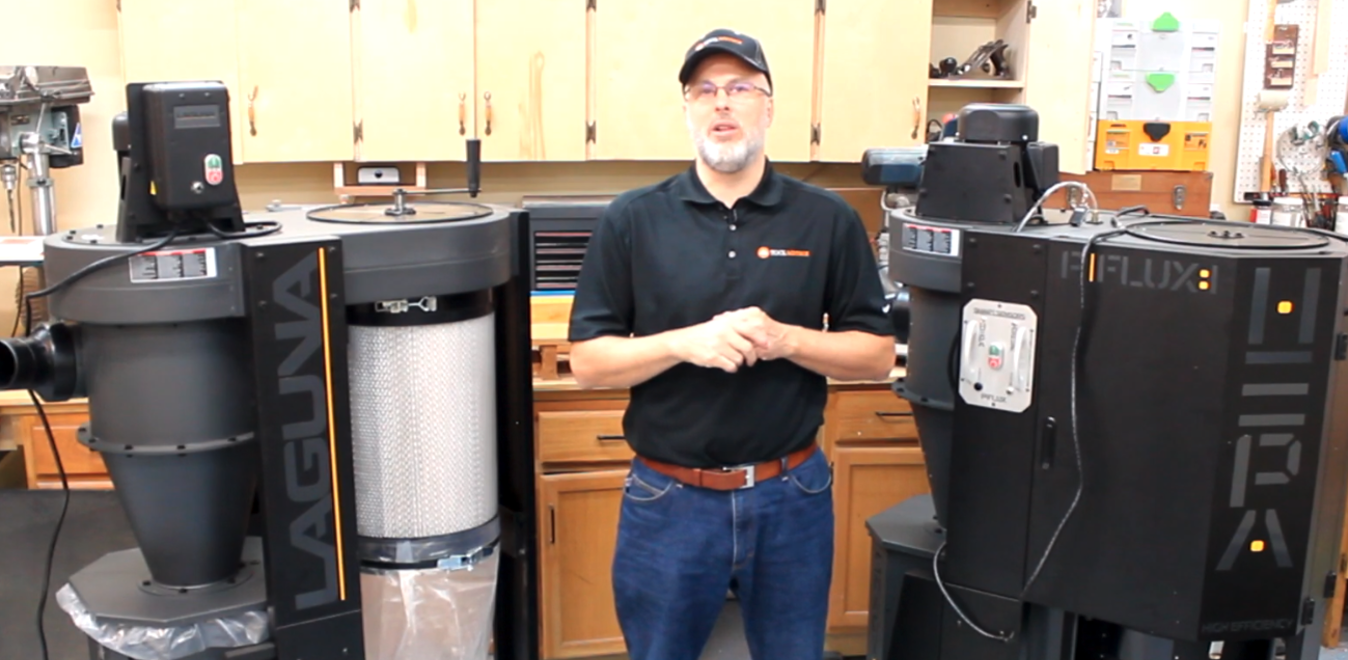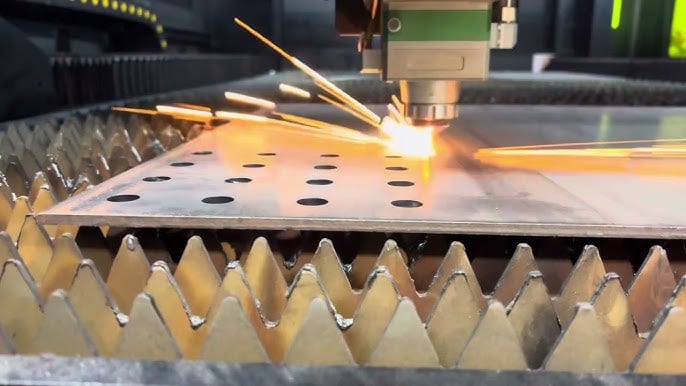Breathing wood dust is a known health hazard, so as woodworkers we owe it to ourselves and our families to invest in proper dust collection. There are many options to choose from, so it’s important to understand the trade-offs, and how much power is needed so that we can make the right decision the first time. The first big decision to make is whether to go with a single stage or a two stage cyclonic system.

Single stage dust collectors. A single stage dust collector simply draws air into the unit using its spinning impeller, and filters the air through a bag filter as it exits. Debris that doesn’t get trapped into the filter falls into the bag that is removed from the unit when it becomes about 2/3 full and replaced with a new bag. The advantages of a single stage unit include lower price point and smaller footprint. The downside of these units is that performance drops as the filter becomes caked, which requires that you turn the machine off and smack the sides of the bag to drop the dust down into the bag. Depending on what you are doing in the shop, this process might need to be done multiple times per day. Drum sanders in particular necessitate frequent dust collector maintenance due to the high volume of dust they produce.

Cyclonic dust collectors. These are a more sophisticated type of dust collector, as they use a cone shaped body to guide the dust and debris, sending the dust into the barrel, and the air out through the filter.

By separating the air from the dust, dust collection cyclones keep the filter operating cleanly for longer periods of time, which means better sustained performance and less frequent maintenance. In other words, more shop fun, less hassle factor.

How much power do you need? The answer to this depends on whether you intend to connect the dust collector directly to each tool, requiring you to roll the dust collector as you move from tool to tool. For this approach I suggest a minimum of a 1 HP unit, or 400 actual CFM. Be aware that manufacturer CFM ratings are normally measured with a short piece of straight pipe on the dust collector, and air flow drops dramatically with longer pipe, especially when flex hose is used. Even for direct connection, you would be much happier with performance of a 1.5 HP unit. The direct-connect approach isn’t not a bad option for the occasional woodworker who does a few projects each year. As you get more serious about woodworking, however, you will want to invest in a ducting system. Then, sizing the system becomes more complicated, but I’ll offer some simple guidance to get you in the ballpark. While a 1.5 HP dust collector can handle a small duct system, you will likely outgrow it quickly if you add tools to your shop. My suggestion is to start with at least a 2 HP system to draw dust through your duct work if your shop occupies a single garage stall. If your tools are spread out across the equivalent of a 2 car garage, you will want a 3 HP dust collector. The actual formula for determining the exact CFM requirements is much more complicated, but these simple guidelines should work for the vast majority of shops.
Assessing your options. In the range of options, the only bad choice is to operate a wood shop without dust collection. Putting any dust collector with good filtration in place will immediately improve the air quality in your shop. If your budget allows, consider a cyclone with a duct system so that you can leave the tool in place and spend more time making stuff. If that isn’t viable, get started with a single stage system, and you’ll know if and when it's time to upgrade.
For more information on dust collection and other shop tools, check out the ToolMetrix YouTube channel.




